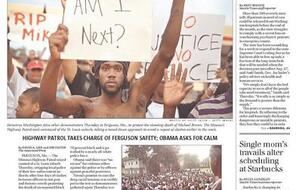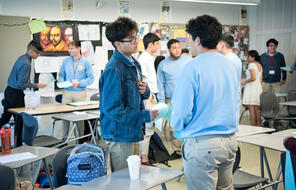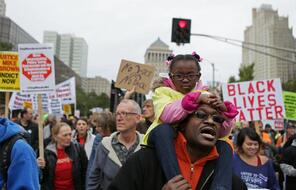Mamie Till-Mobley Chooses to Hold an Open-Casket Funeral
Emmett Till’s body was prepared for burial at A. A. Rayner Funeral Home in Chicago, Illinois. Mamie Till-Mobley insisted on an open-casket funeral. “Let the world see what I’ve seen,” she told the funeral director. Emmett’s service was held at Roberts Temple Church of God in Christ in Chicago’s South Side. On the day of the service, the church was filled to capacity and a crowd of 5,000 people formed a line that stretched four blocks. Till’s family decided to postpone the burial to give visitors a chance to view Emmett. Over 100,000 people visited his casket over a four-day period.
There were so many people there. So many people who had known Emmett, so many more people who would come to know him only like this. I was told that every fifth person or so had to be assisted. Nurses were on hand to help. People were falling out, fainting. Extra chairs had been set up outside to assist the people who didn't have the strength to go on . . . On the one hand, as a mother, I couldn’t bear the thought of people being horrified by the sight of my son. He had always been such a fine young boy and I was so very proud of him. But, on the other hand, I felt that the alternative was even worse. After all, we had averted our eyes far too long, turning away from the ugly reality facing us as a nation. I know, because I was guilty of the same thing. But to let that continue, to think that even one more mother, one more mother’s son, would have to suffer, well, that was too much for me to bear. People had to face my son and realize just how twisted, how distorted, how terrifying, race hatred could be. How it had menaced my son during his last, tortured hours on earth. How it continued to stalk us all. Which is why people also had to face themselves. They would have to see their own responsibility in pushing for an end to this evil. 1
- 1Mamie Till-Mobley and Christopher Benson, Death of Innocence: The Story of the Hate Crime That Changed America (New York: One World, 2003), 142.
How to Cite This Reading
Facing History & Ourselves, “Mamie Till-Mobley Chooses to Hold an Open-Casket Funeral”, last updated March 31, 2023.













